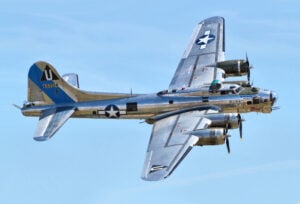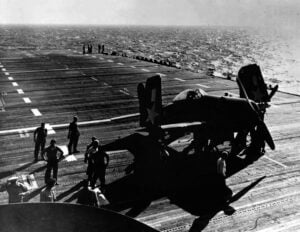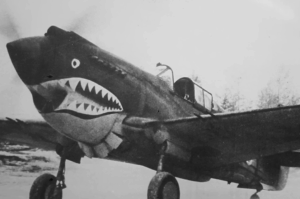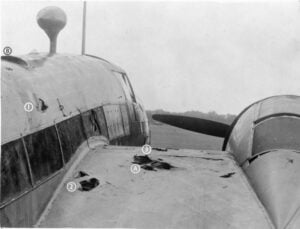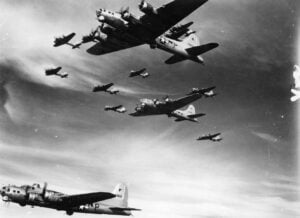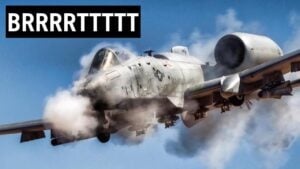3 WWII Aircraft That Were Considered Flying Tanks

Wartime History / YouTube
During World War II, certain aircraft earned reputations for their durability and effectiveness in combat, leading them to be likened to “flying tanks.” Three notable examples are the P-51 Mustang, the P-47 Thunderbolt, and the Ilyushin Il-2 Sturmovik. Each played a significant role in their respective air forces and left a lasting impact on aerial warfare.
P-51 Mustang: America’s Long-Range Fighter

In the early 1940s, the British sought a new fighter aircraft to bolster their air defenses. North American Aviation responded by developing the P-51 Mustang, a single-seat fighter known for its impressive speed and agility. Initially powered by an Allison engine, the Mustang’s performance was adequate for low-altitude operations. However, it was the integration of the Rolls-Royce Merlin engine that transformed the P-51 into a high-altitude powerhouse, capable of reaching speeds over 400 miles per hour.
One of the Mustang’s most significant contributions was its ability to escort bombers on long-range missions deep into German territory. Equipped with external fuel tanks, the P-51 could accompany B-17 and B-24 bombers to targets and back, providing crucial protection against enemy fighters. This extended range and escort capability played a vital role in the success of Allied bombing campaigns. Pilots praised the Mustang for its responsiveness and reliability, making it a favorite among those who flew it.
P-47 Thunderbolt: The Rugged “Jug”

Developed by Republic Aviation, the P-47 Thunderbolt was one of the heaviest single-engine fighters of World War II. Its robust design featured a large, powerful Pratt & Whitney R-2800 Double Wasp engine, enabling it to reach speeds up to 433 miles per hour. The aircraft’s substantial weight and size earned it the affectionate nickname “Jug” among pilots and crew.
The Thunderbolt was heavily armed with eight .50-caliber machine guns, allowing it to deliver devastating firepower in both air-to-air and air-to-ground engagements. Its rugged construction and armor protection made it highly resilient, capable of sustaining significant damage and still returning safely to base. This durability made the P-47 particularly effective in ground-attack missions, where it could withstand anti-aircraft fire while delivering bombs and rockets on enemy positions. Pilots valued the Thunderbolt for its survivability and firepower, making it a formidable presence in the skies over Europe and the Pacific.
Ilyushin Il-2 Sturmovik: The Soviet “Flying Tank”

On the Eastern Front, the Soviet Union introduced the Ilyushin Il-2 Sturmovik, a ground-attack aircraft designed to support Red Army operations against German forces. The Il-2 was a single-engine, low-wing monoplane, heavily armored to protect its crew and vital components from ground fire. This extensive armor led to its nickname, the “Flying Tank.”
The Il-2 was equipped with a variety of weapons, including cannons, rockets, and bombs, making it highly effective against enemy tanks, artillery, and infantry positions. Its ability to fly at low altitudes allowed for precise targeting, and it often operated in large formations to overwhelm enemy defenses. The aircraft’s impact on the battlefield was significant, contributing to the Soviet Union’s ability to repel and defeat German advances. The Il-2’s combination of firepower, protection, and versatility made it a cornerstone of Soviet air strategy during the war.














